Why you should book a holiday to Ningaloo, Australia’s ‘other reef’
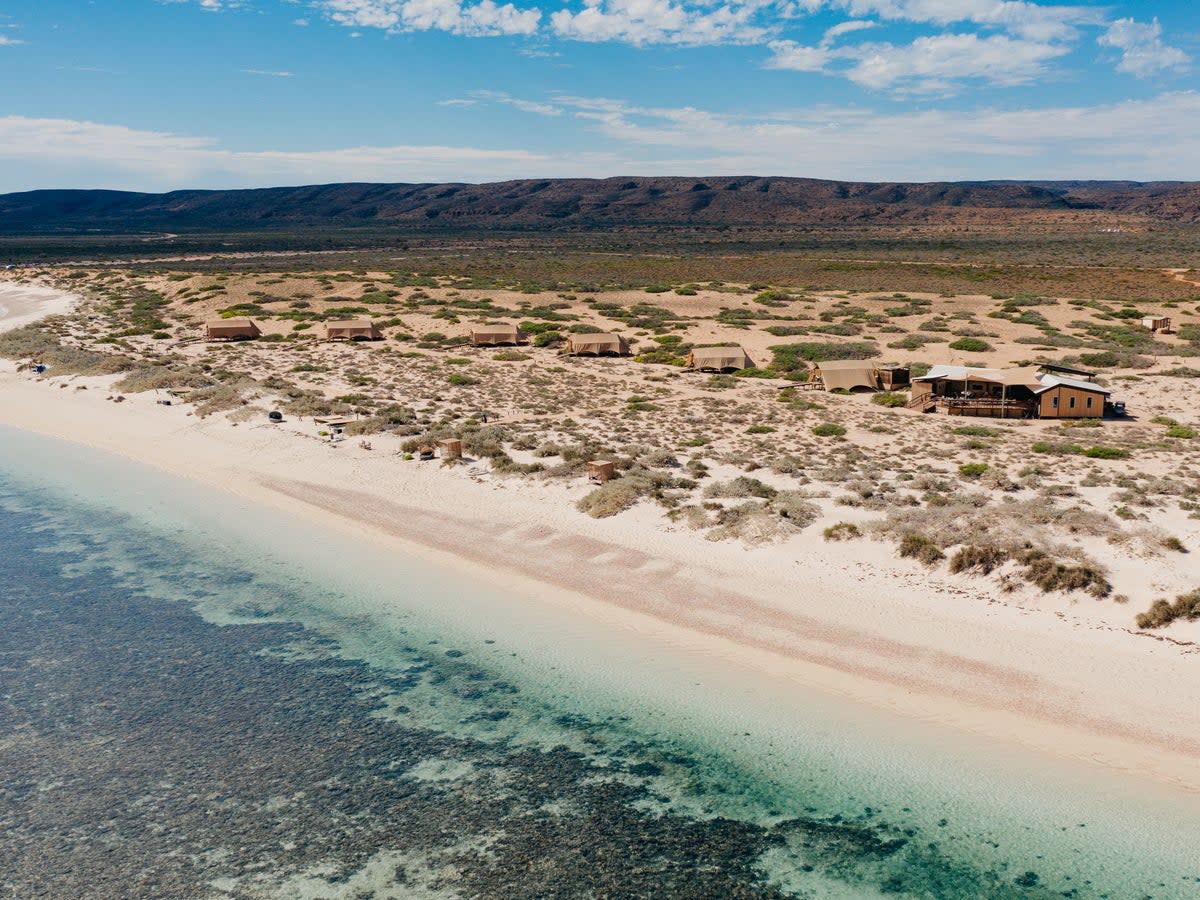
If you’ve been to Australia, chances are you’ve done the east coast. Maybe you partied hard in Sydney? Kicked back in the haute-hippie enclave of Byron Bay? Snaked your way up into tropical Queensland for your final prize: the psychedelic beauty of The Great Barrier Reef?
But Australia has another reef, and it is an entirely different beast. Until recently, lesser-known Ningaloo has remained in the shadow of its flashy east-coast sister. A lot of this has to do with location – Ningaloo is marooned off the northwest coast of Australia, on the edge of the red, dusty middle of nowhere, 745 miles north of Perth.
Not long ago you needed a big old truck, four spare days and a lot of resolve to get there. But you can now fly to Ningaloo from Perth, and a new direct flight from Melbourne means that four hours after you’ve been drinking coffee in some hipster bar in the rain, you can be walking into blinding outback sunshine. This is a unique place where, as Australian novelist Tim Winton puts it, “the desert dips its toe into the sea.”
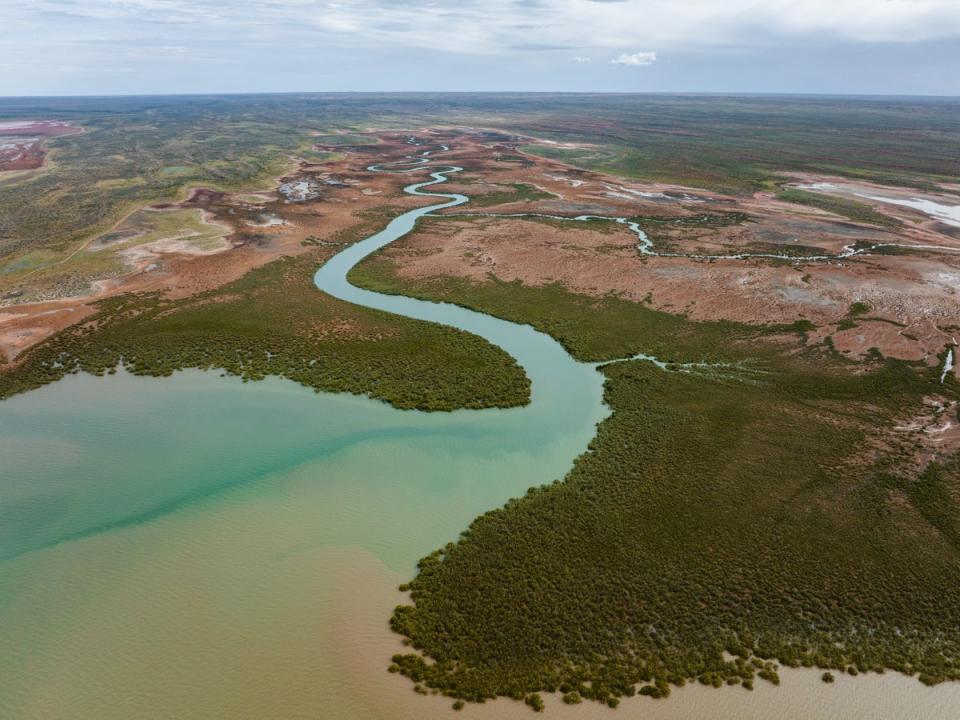
And what a sea. I promise you haven’t seen a palette of painterly blues like this, with iridescent Indian Ocean sapphires and aquamarines backlit by bright, white sand. The look is next-level Maldives, but critically, without the development. A hard-won Unesco World Heritage listing for the region in 2011 means there’s not a lot there apart from several hundred miles of untouched coastline where no coastal development, commercial fishing, offshore oil dredging, or heavy shipping is allowed.
Nature tourism in Ningaloo is strictly controlled to protect the crystalline waters, soupy with marine life. The main attraction is the megafauna, or as they call it here, “the big three”: whale sharks, which feed from March to August, and manta rays and humpback whales, who make their migratory route through the reef in the winter months. If you are lucky enough, we’re told, you can swim with these incredible creatures.
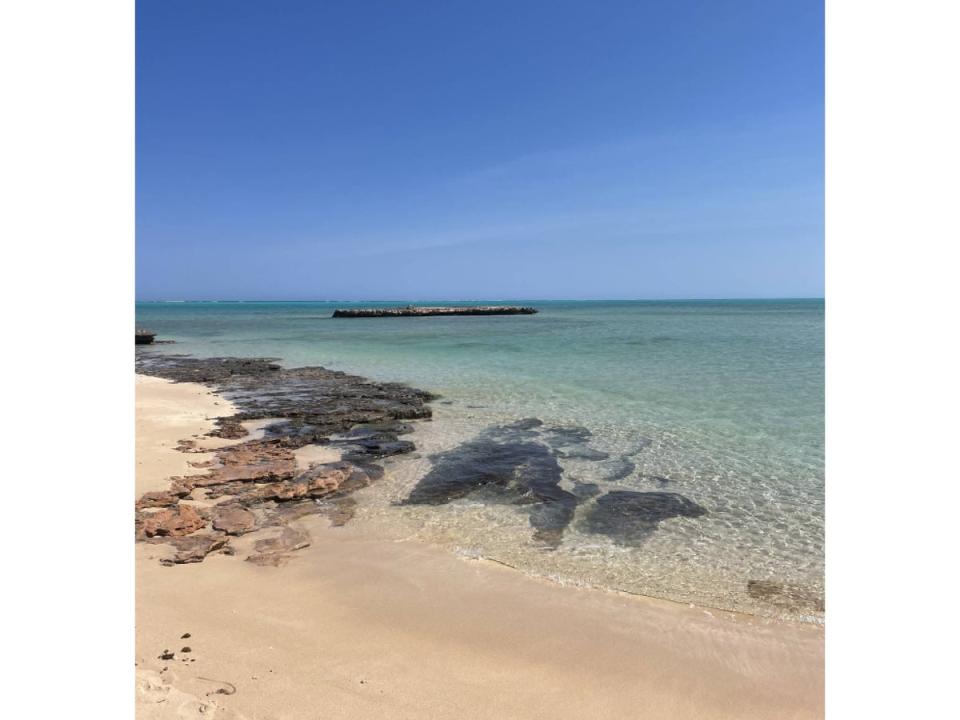
Full disclosure: I am not a scuba diver and have only entry-level snorkelling skills. I also wasted too much of my childhood watching movies like Jaws, so the idea of deliberately diving off a boat to swim with anything that has the word shark in it feels somewhat counter-intuitive. But on the small charter boat trip we join with Live Ningaloo, resident marine biologist Katie reassures us that whale sharks are the gentle giants of the ocean. They may be the largest fish in the world – they can grow to almost 20 metres long – but they are more interested in feeding on plankton than travel journalists.
Once on the boat, we weren’t given the chance to overthink it. As we scrambled into our wetsuits, Katie explained that there was no guarantee we would interact with any of the big three. But we were put on standby just in case, as the spotter plane searched for pods of humpbacks or a lone whale shark. Just as I was enjoying a nice cup of tea and a slice of lemon cake in the sun, Katie got the thumbs up. “We have a sighting, quick, get ready,” she said excitedly.
We pinged on our masks, bum-shuffled onto the back board, flippers fluttering nervously over the water and then Katie started her countdown… “150 metres, 100 metres, 50 metres… jump”. We hurled ourselves in and Katie shouted: “Look down now.” With my heart pounding and almost too scared to look, I plunged under the water and saw the huge, striated form of a humpback whale and her calf. The whale rolled her eyes towards us in silent acknowledgement as she continued her serene migration beneath.
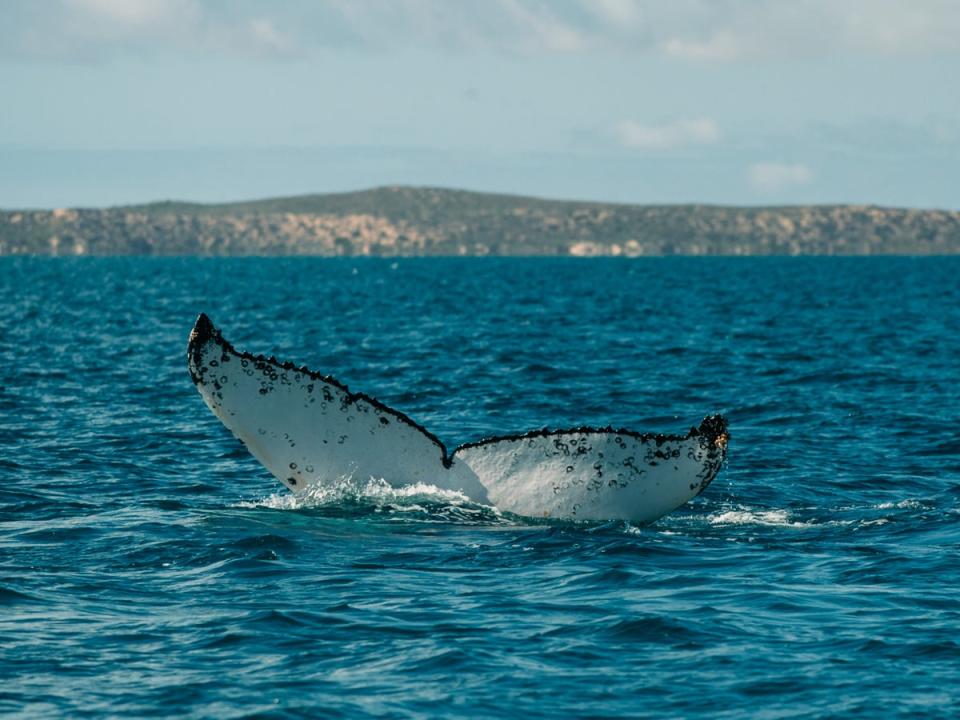
I have played back this moment in my mind ever since and I still cannot quite believe it happened. Not that we had time to process it. Moments after we had hauled ourselves back onto the boat in a manoeuvre ironically known as “the sexy seal”, another message crackled through from the spotter plane. Bosh! We were back in the water, this time bobbing around beside a seven-metre whale shark. “Remember don’t get too close,” said Katie, in the most unnecessary warning ever. “But quick, let’s follow him…”.
Pulse still thumping, I plunged back under and our group of six quietly swam next to the adolescent male shark, learning to match his pace but still giving him enough space so he didn’t feel threatened. Occasionally he would look across at us as if to say, “what’s up with you, weirdos?”, but he seemed completely unbothered by our presence.
Read more on Australia travel:
It turned out to be one of the most exhilarating and exhausting (mentally and physically) days of my life; over a glass of wine that evening a fellow snorkeller described those precious moments of connection as “nothing less than spiritual”. I now get why people make the pilgrimage to Ningaloo and how the local, low-key town of Exmouth has become a shrine to the dappled, ugly beauty of the whale shark (anyone for a whale shark rashie and matching key ring?).
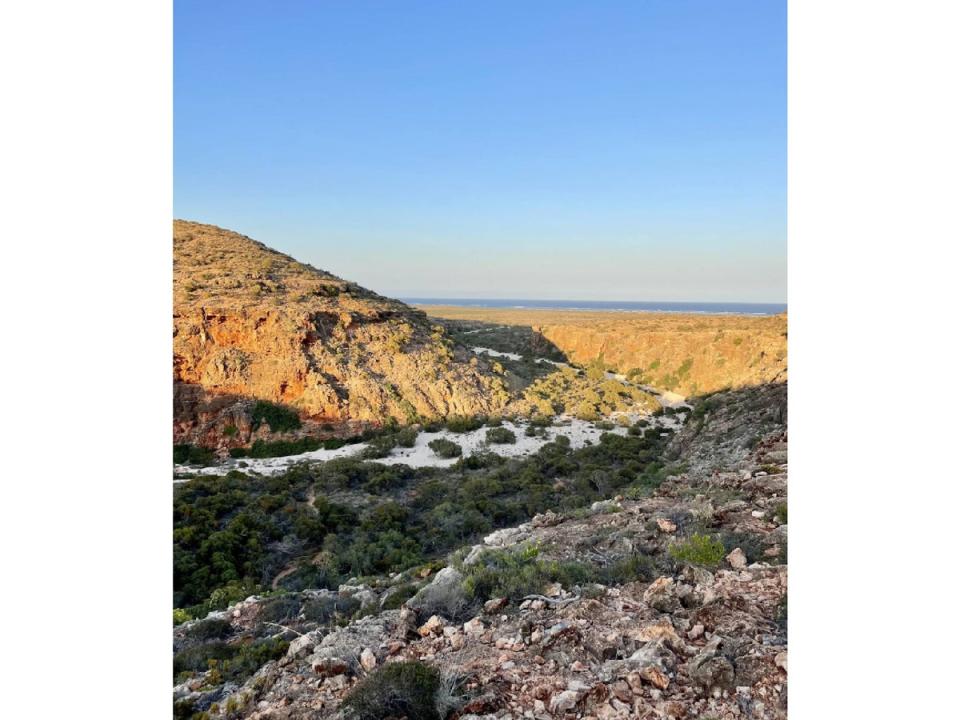
Thanks to Ningaloo’s location, you can also combine your trip with hikes in the limestone gorges of the Cape Range National Park and hide in the dunes of deserted beaches to watch the mating rituals of loggerhead turtles.
There are several comfortable and functional holiday parks and camping grounds in the area and, for an authentic taste of Outback life, the Bullara Station is an hour’s drive from Ningaloo Marine Park. It may look like the set of Mad Max but food in the Camp Kitchen is restaurant-worthy, thanks to Londoner Toby Fisher and his wife Marie who have turned it into a foodie destination.
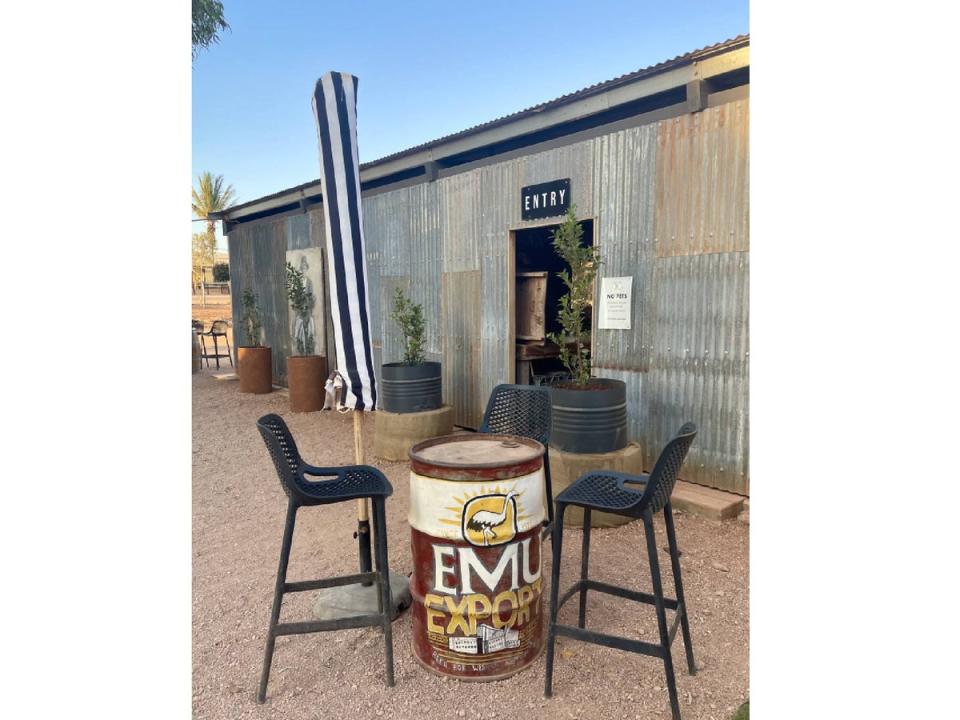
But if you’re after a more swanky experience that’s still immersed in the great outdoors, then the area’s most exclusive resort, Sal Salis, is for you. This eco-camp hidden in the dunes on a remote stretch of beach inside the Cape Range National Park has 15 solar-powered, canvas wilderness tents designed to have as little impact on the environment as possible.
It’s so at one with nature that when we arrived the general manager Leith, who was working an Akubra hat, shorts and crocs, suggested we hand over any food in our luggage. “We have a lot of small marsupials here with an incredibly sensitive sense of smell,” he explained. “They can chew through a tent and a soft suitcase just to get to some chocolate.” We got the picture and handed over our contraband Percy Pig sweets.
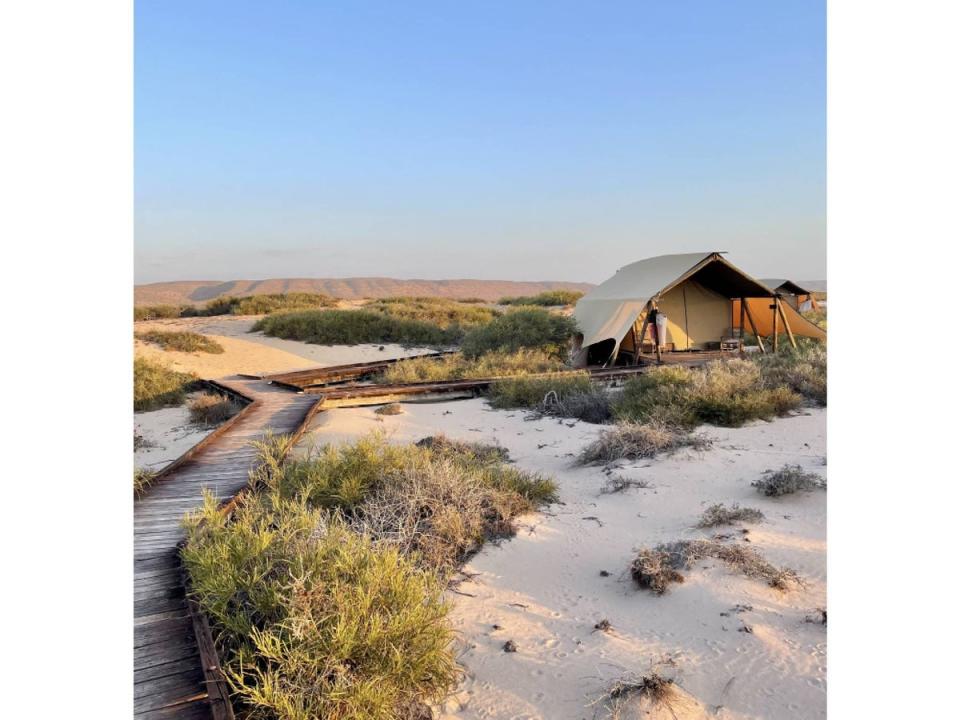
It was a desert-dry 38C that day, but inside the tents were kept cool by double-roof insulation which cleverly allowed air to circulate between the two layers. There are proper beds with white linen and an ensuite bathroom with organic bath products, a compost loo and a shower which is open to the elements but not so open that other guests get an unwanted eyeful.
On the deck is a hammock big enough for two where you can work your way through a chilled bottle of excellent Margaret River cuvee snaffled from the open bar. Then try, if you can, to make sense of the moment you were given the side-eye by a 40,000-tonne whale. Where on earth will you ever be able to do that again?
When to go
Whale shark, humpback and manta ray season in Ningaloo is from March to October.
How to get there
Qantas flies from London to Perth or Melbourne. New, direct flights from Melbourne to Exmouth Airport, Ningaloo, take around four hours, departing Thursdays and Sundays, from April to October.
What to watch
To learn more about Ningaloo and how climate activists are fighting to protect the area, watch Tim Winton’s brilliant three-part documentary series, Ningaloo Australia’s Ocean Wonder (available to stream on Now TV, Apple TV and Amazon Prime).
Where to stay
Bullara Station offers a range of camping options, from basic sites with no power starting at £18 a night to well-equipped safari huts with beds and ensuite bathrooms sleeping four from £230 a night. The site’s Table restaurant offers a special experience with locally sourced ingredients, shared tables for guests to socialise, and a vibrant atmosphere. Although closed until the end of 2023, you can book now for 2024 breaks from April onwards.
Mantarays Ningaloo Beach Resort is situated just 5km from Exmouth town centre; facilities include a swimming pool, gym, restaurant, lounge and bar. As its name suggests, the hotel overlooks the sea and accommodation options cover hotel rooms, self-contained apartments and beachfront bungalows.
Sal Salis Ningaloo Reef offers eco-luxe tents with all-inclusive food, wine, snorkelling and hiking activities from £2,400 for two nights, for two people. The safari-style tents are located in the sand dunes and guests can enjoy an array of activities including stargazing, guided gorge walks and more.
Read more of our hotel reviews

